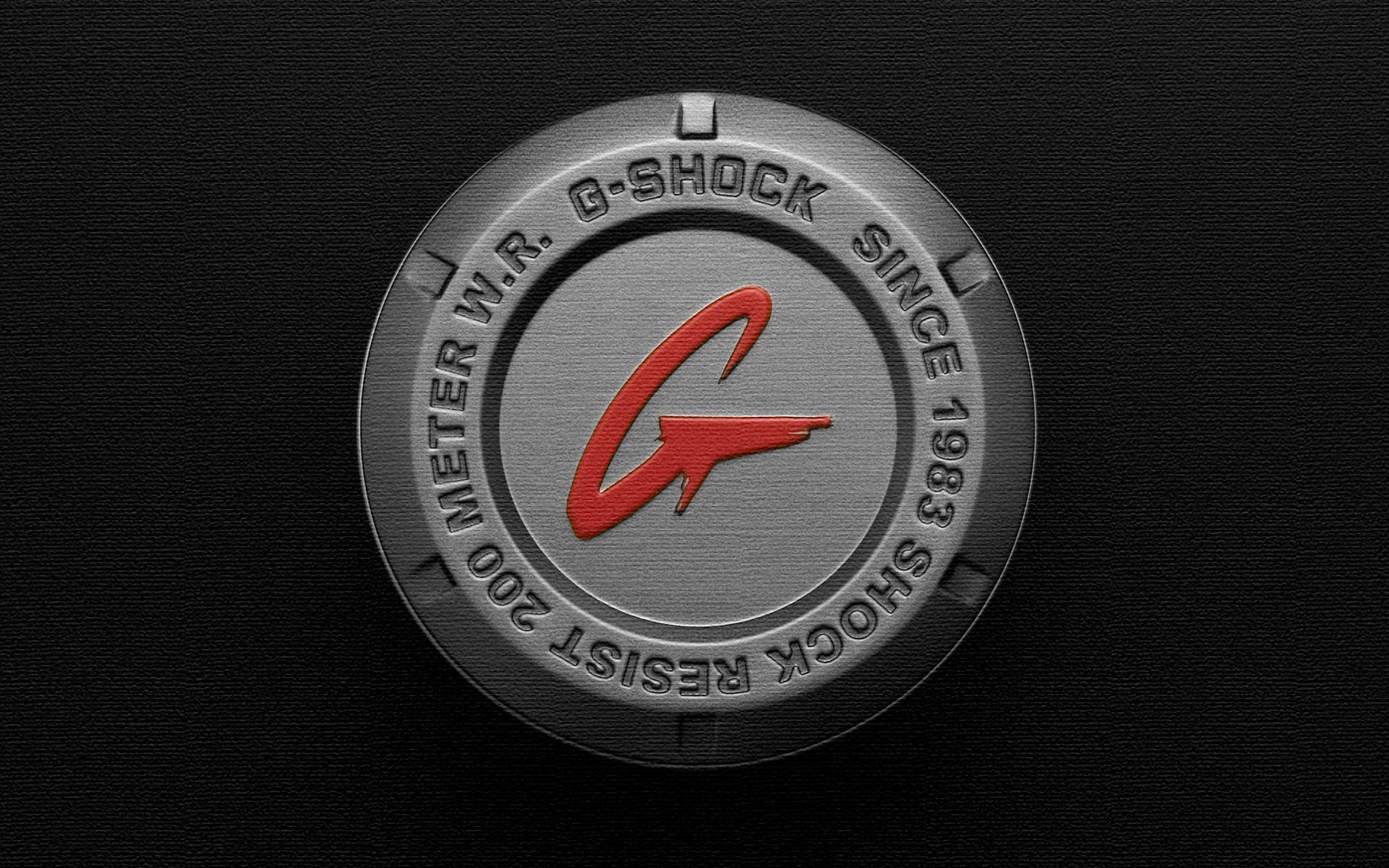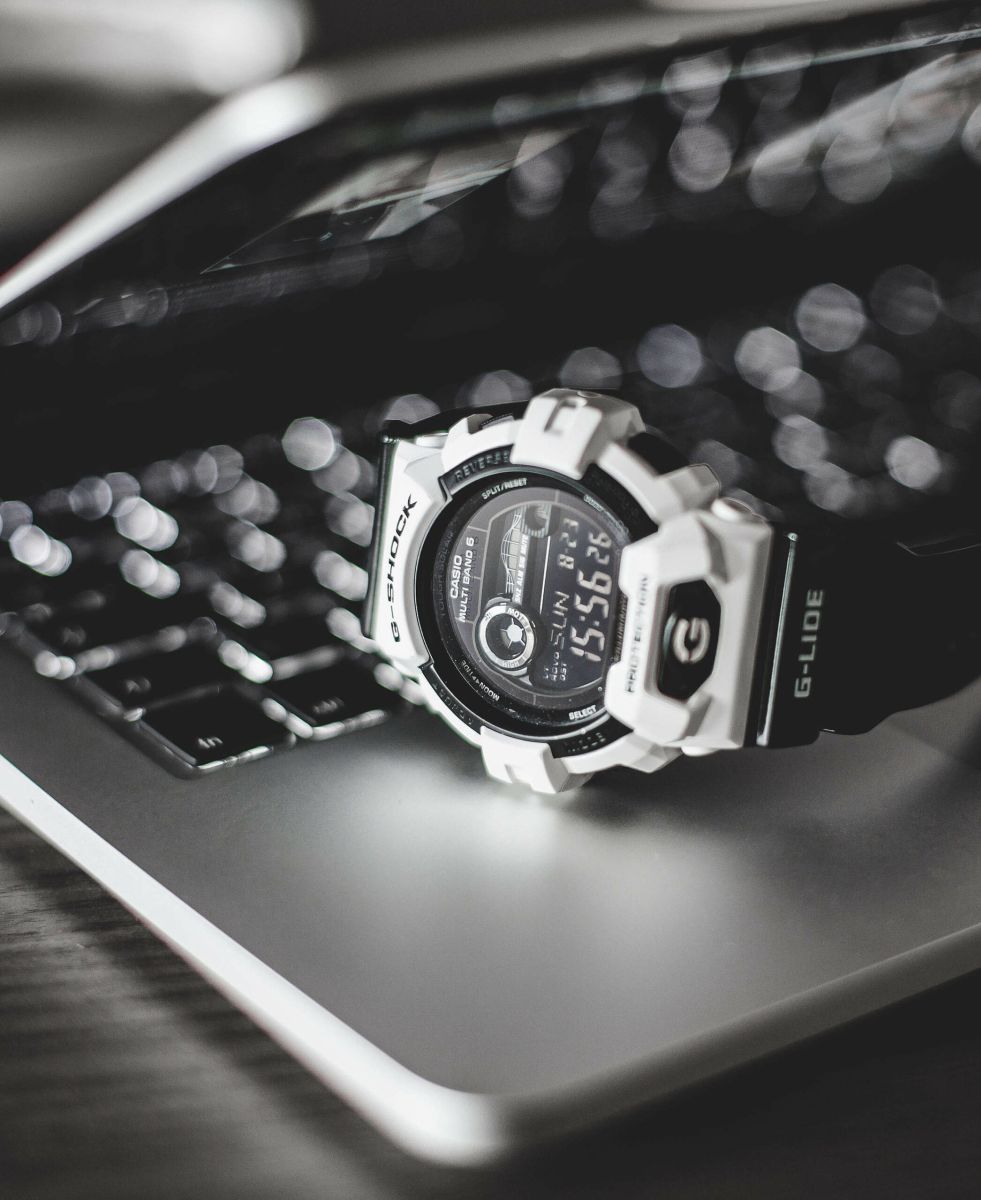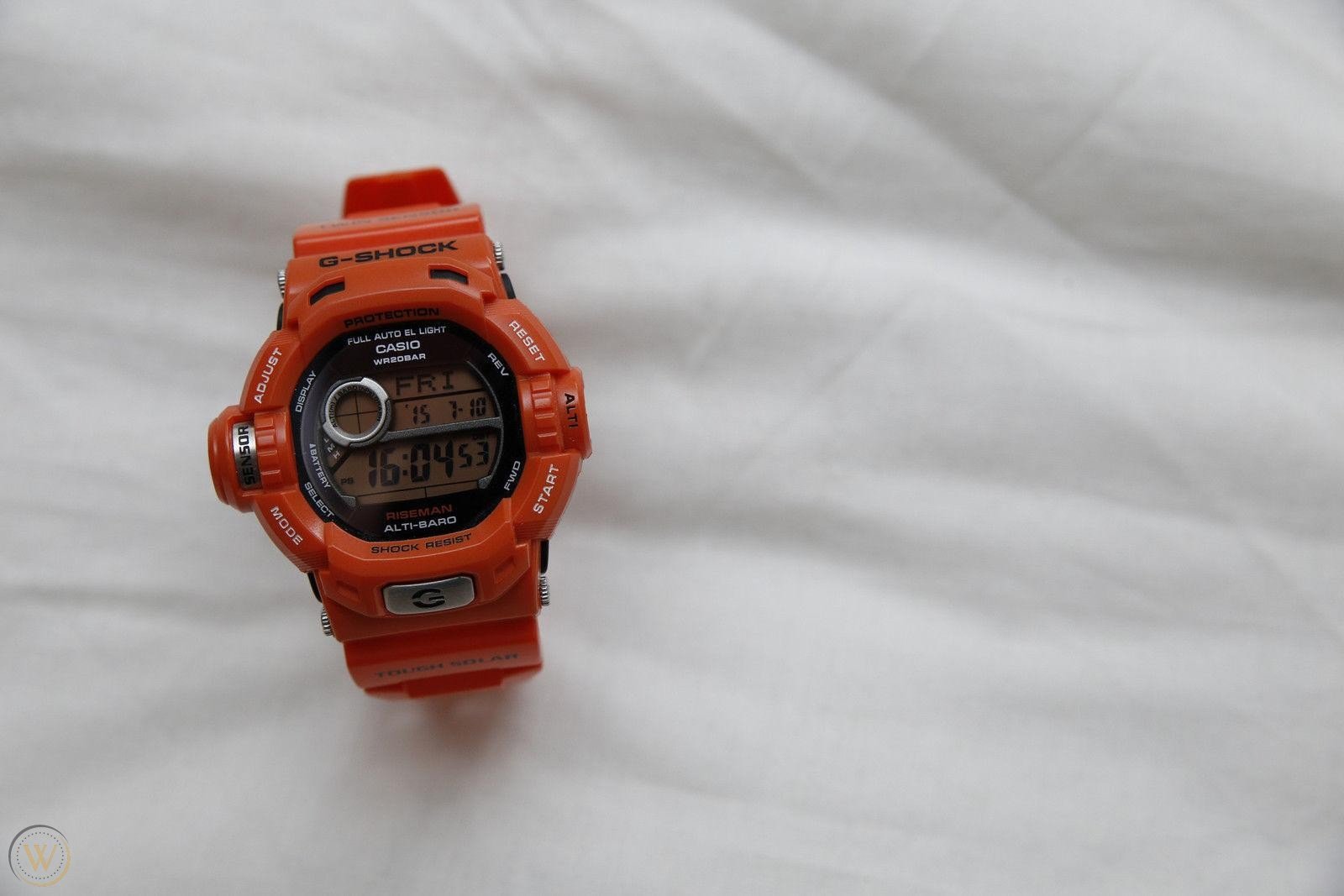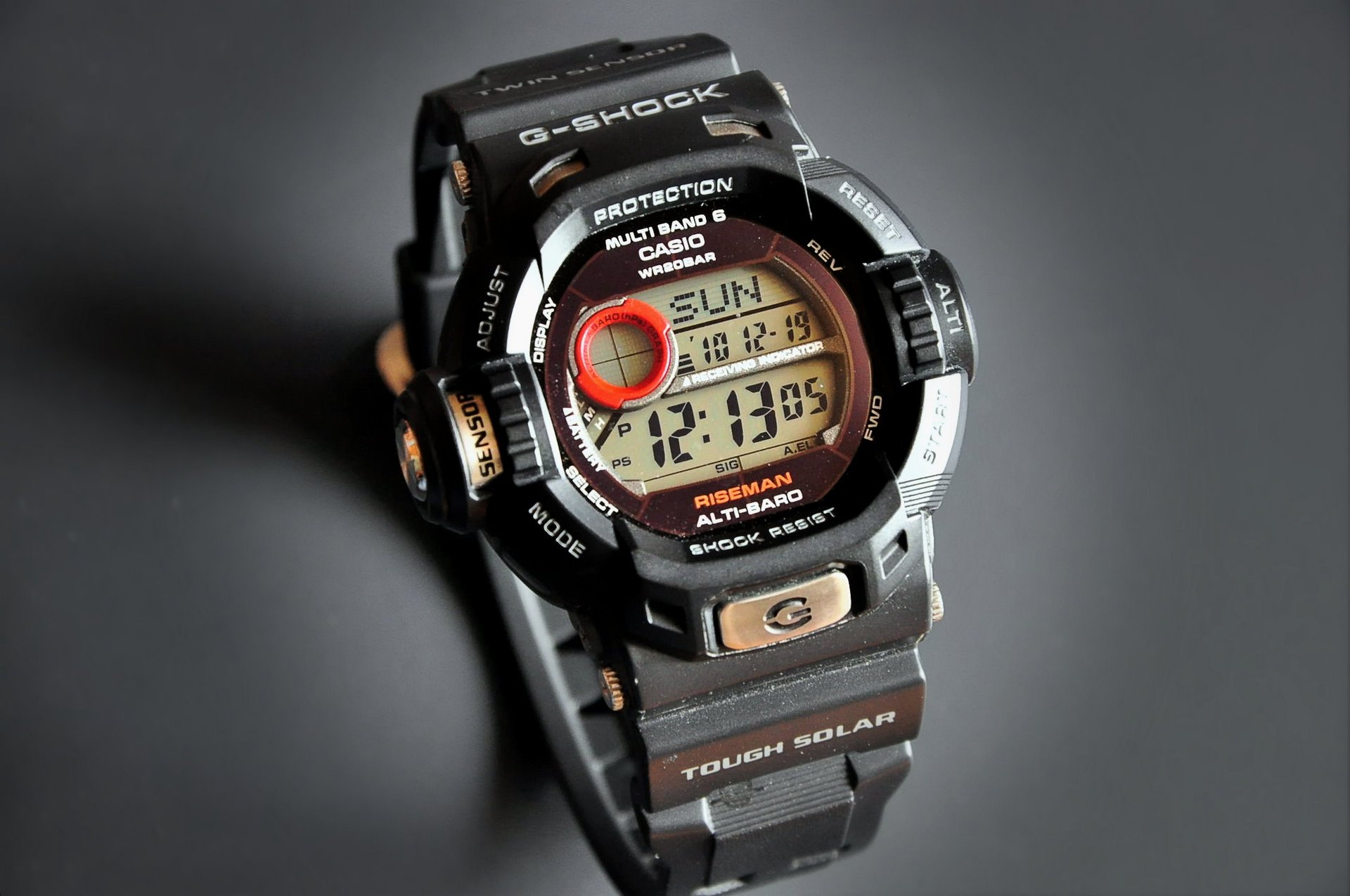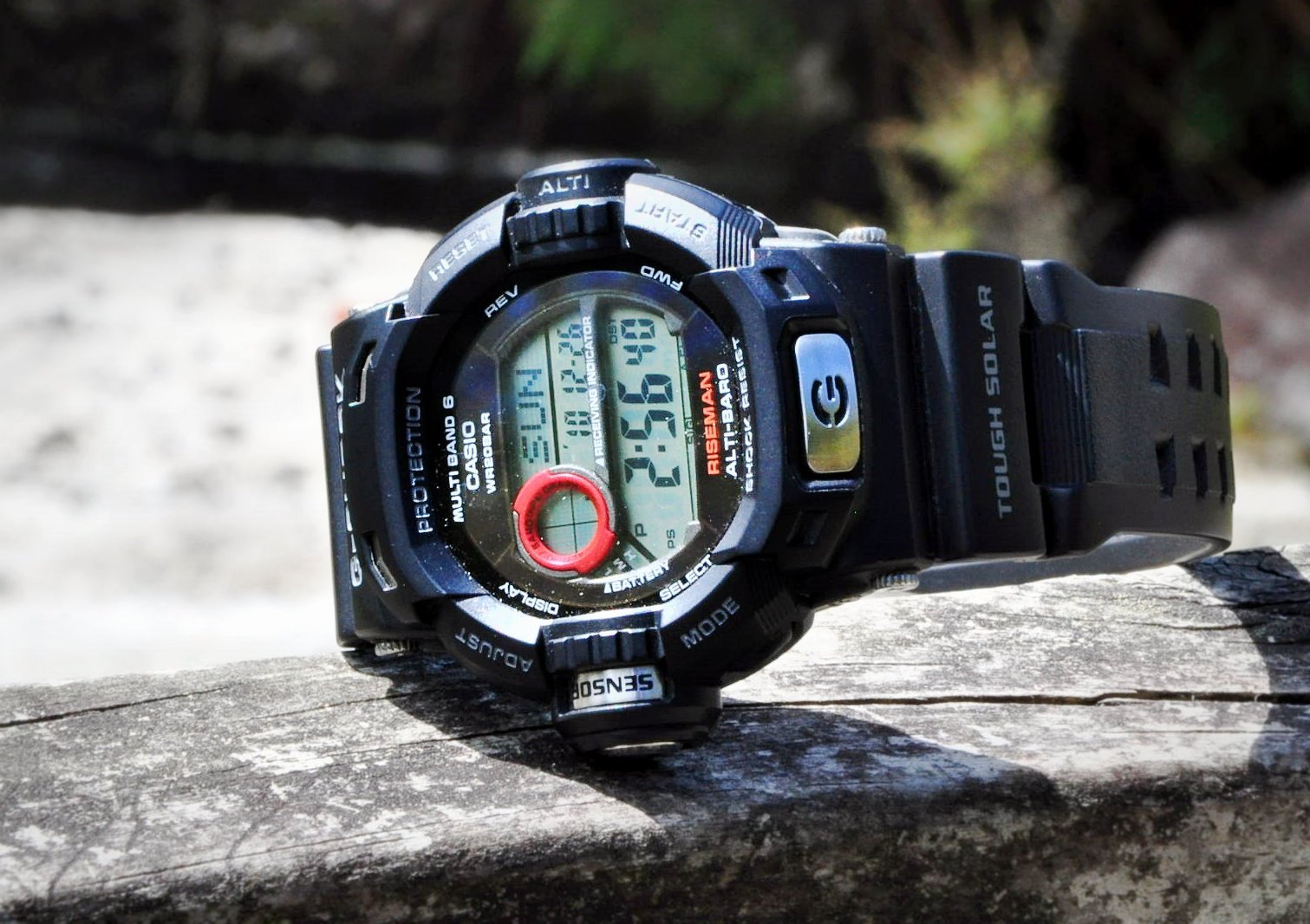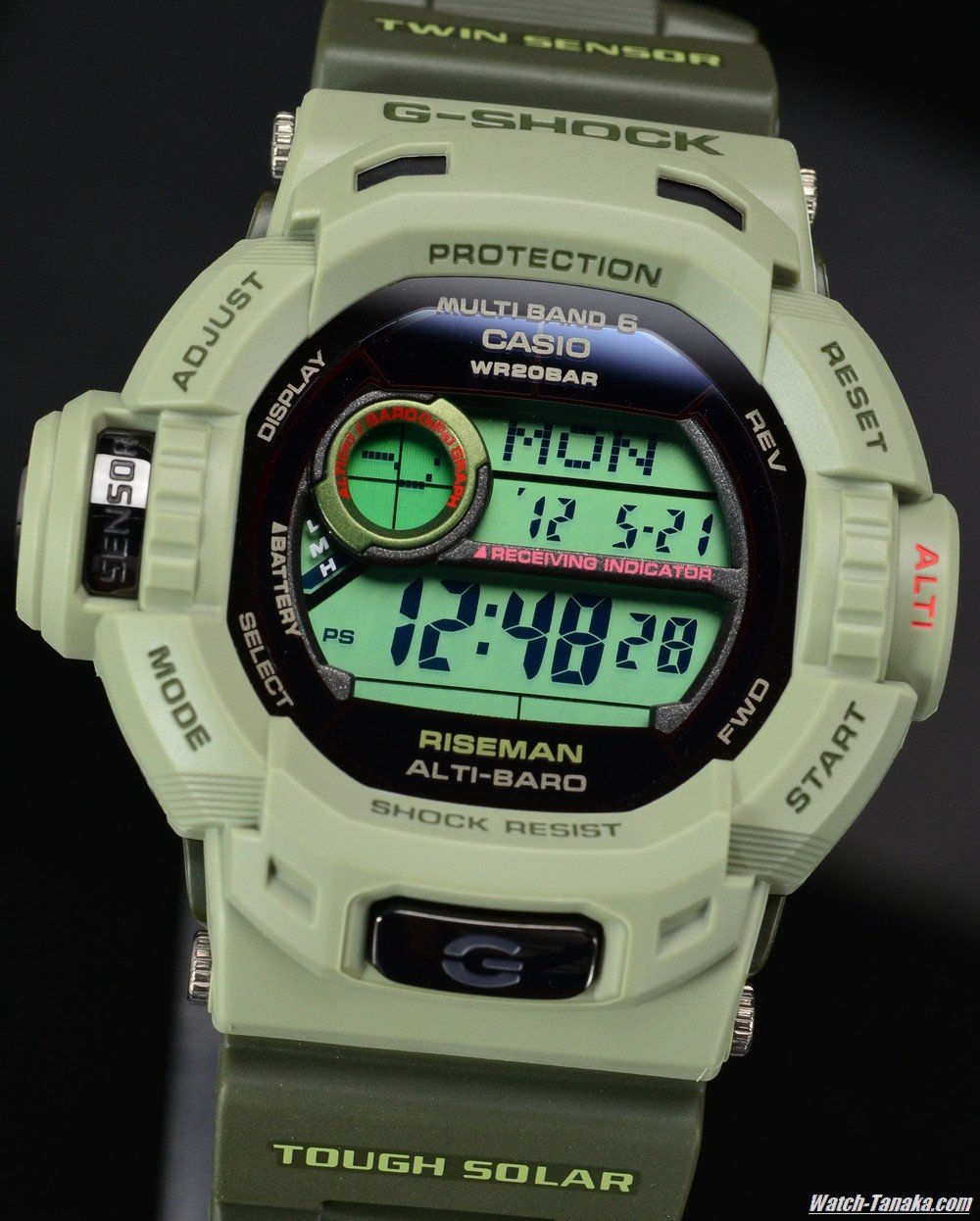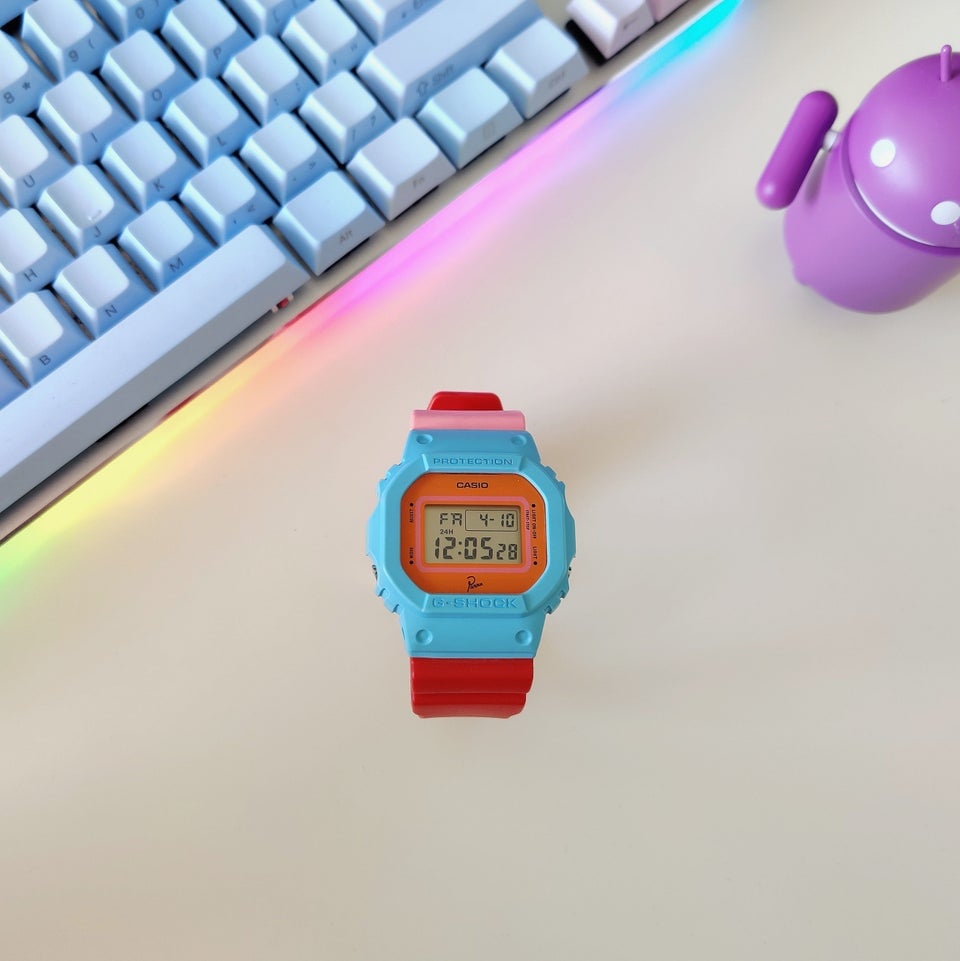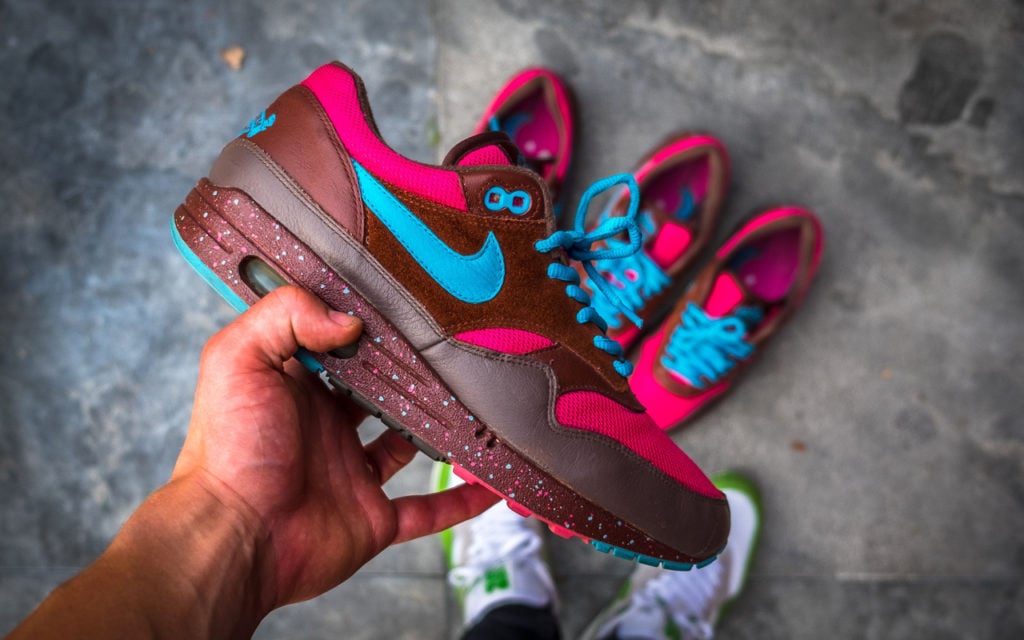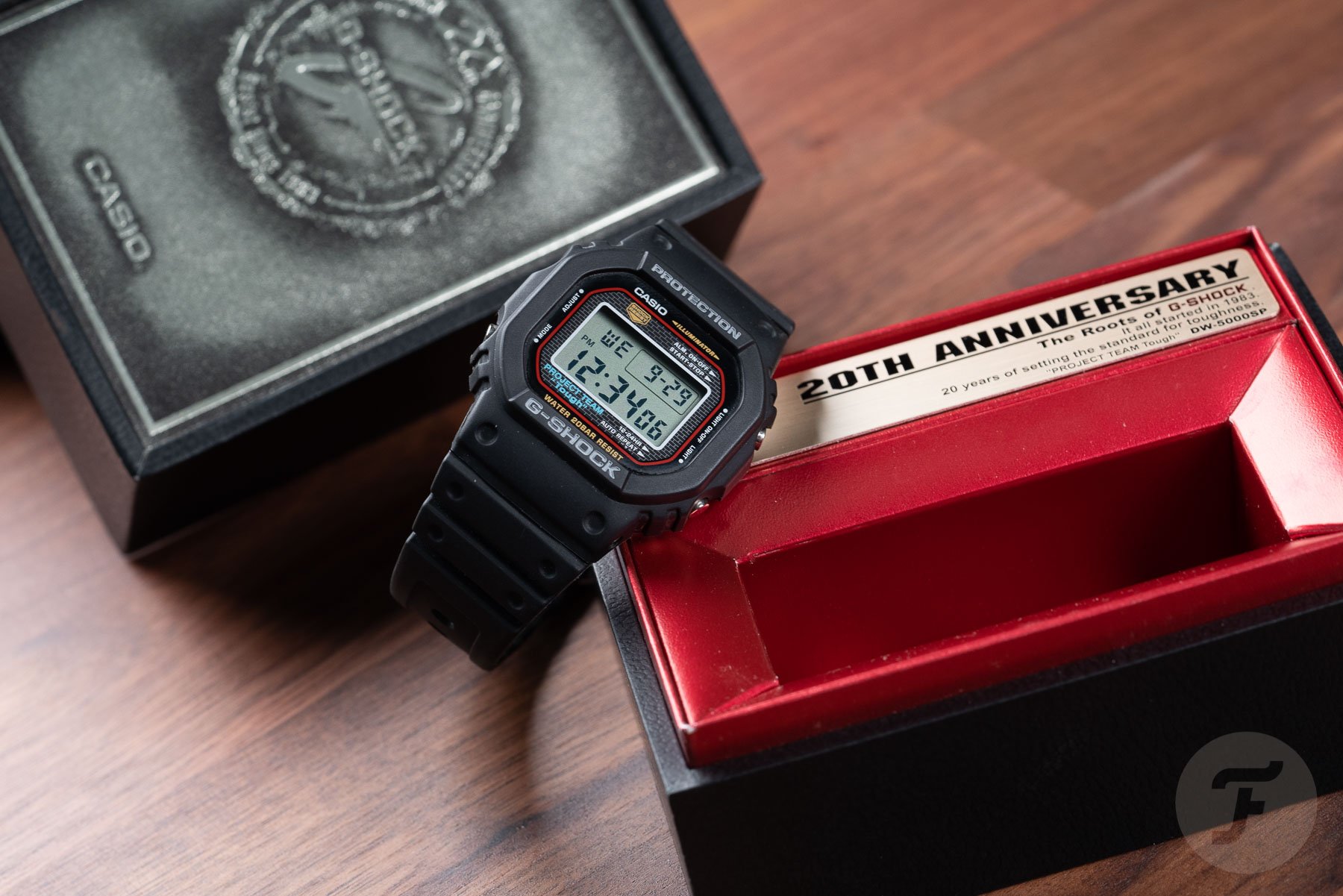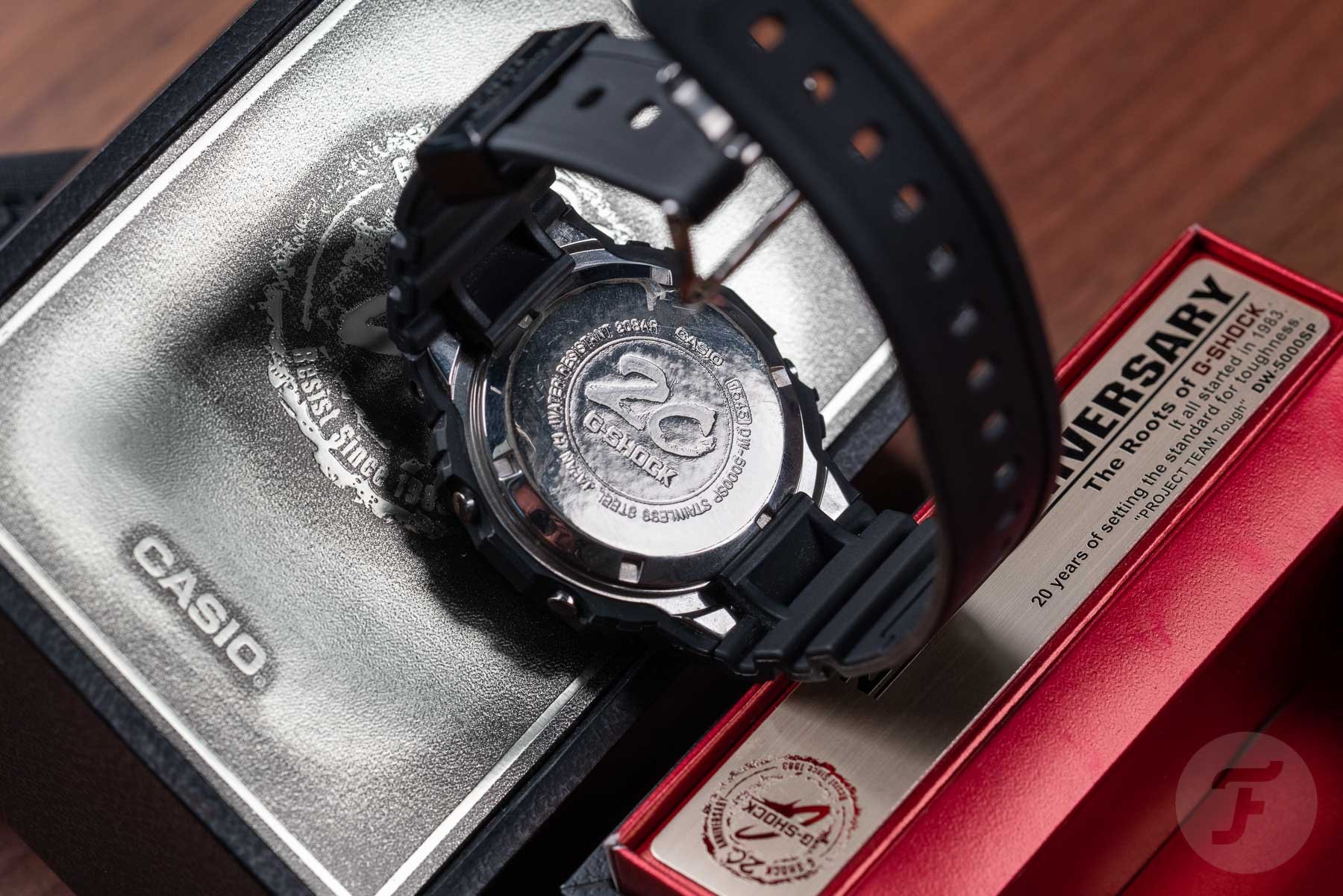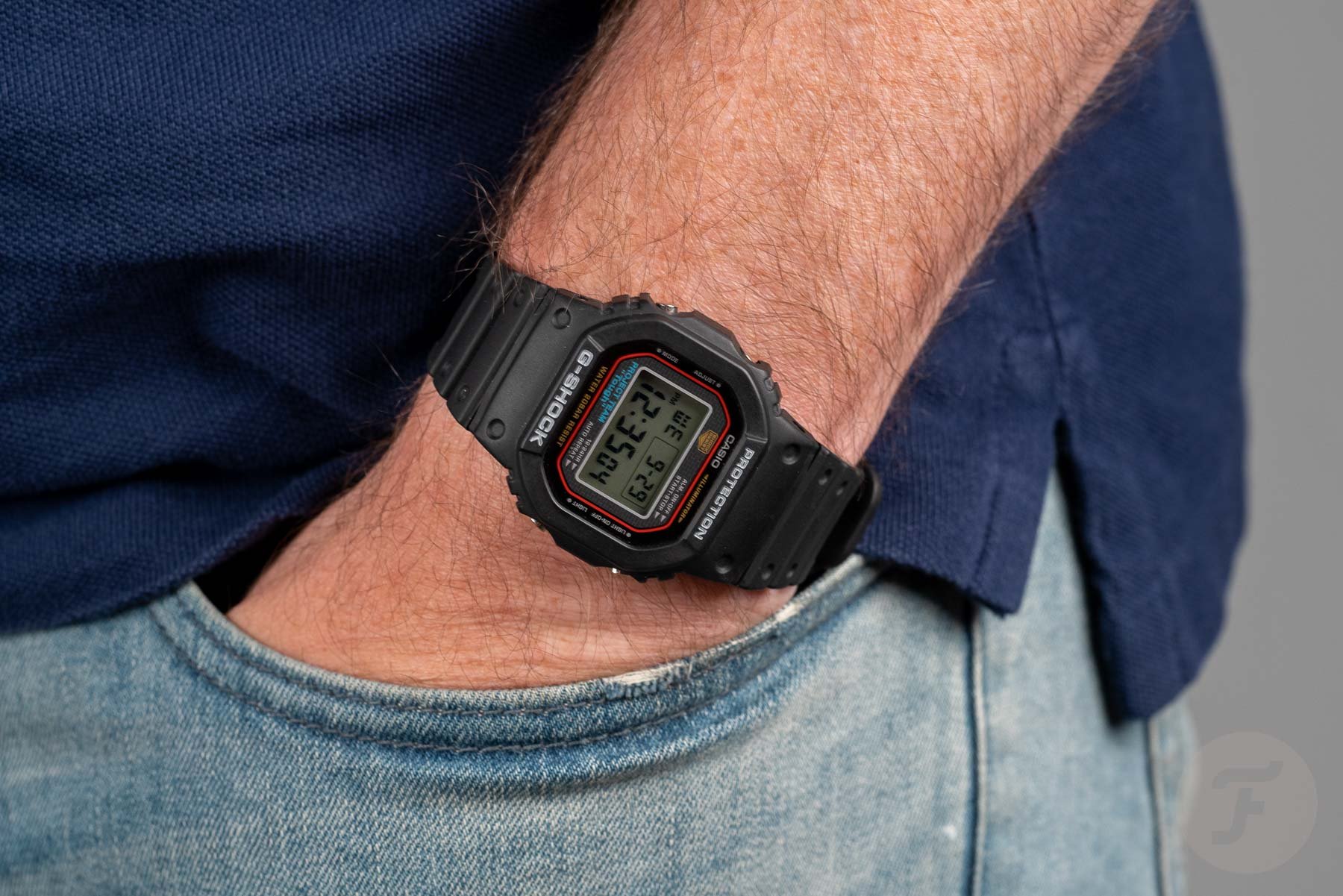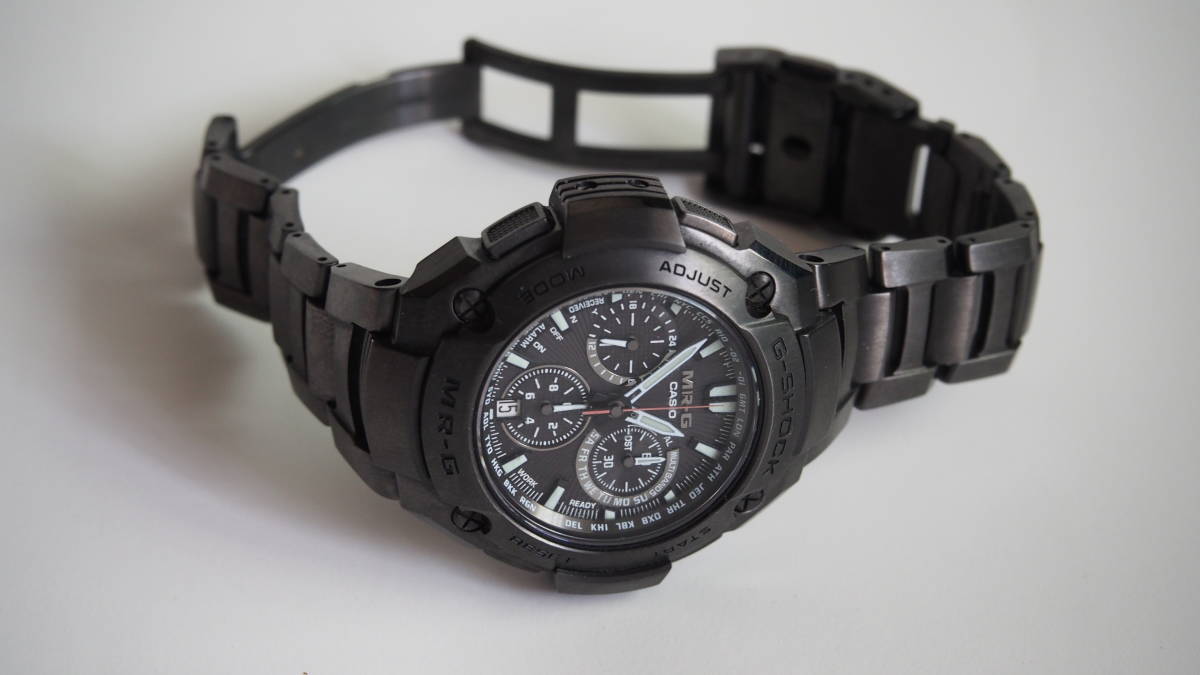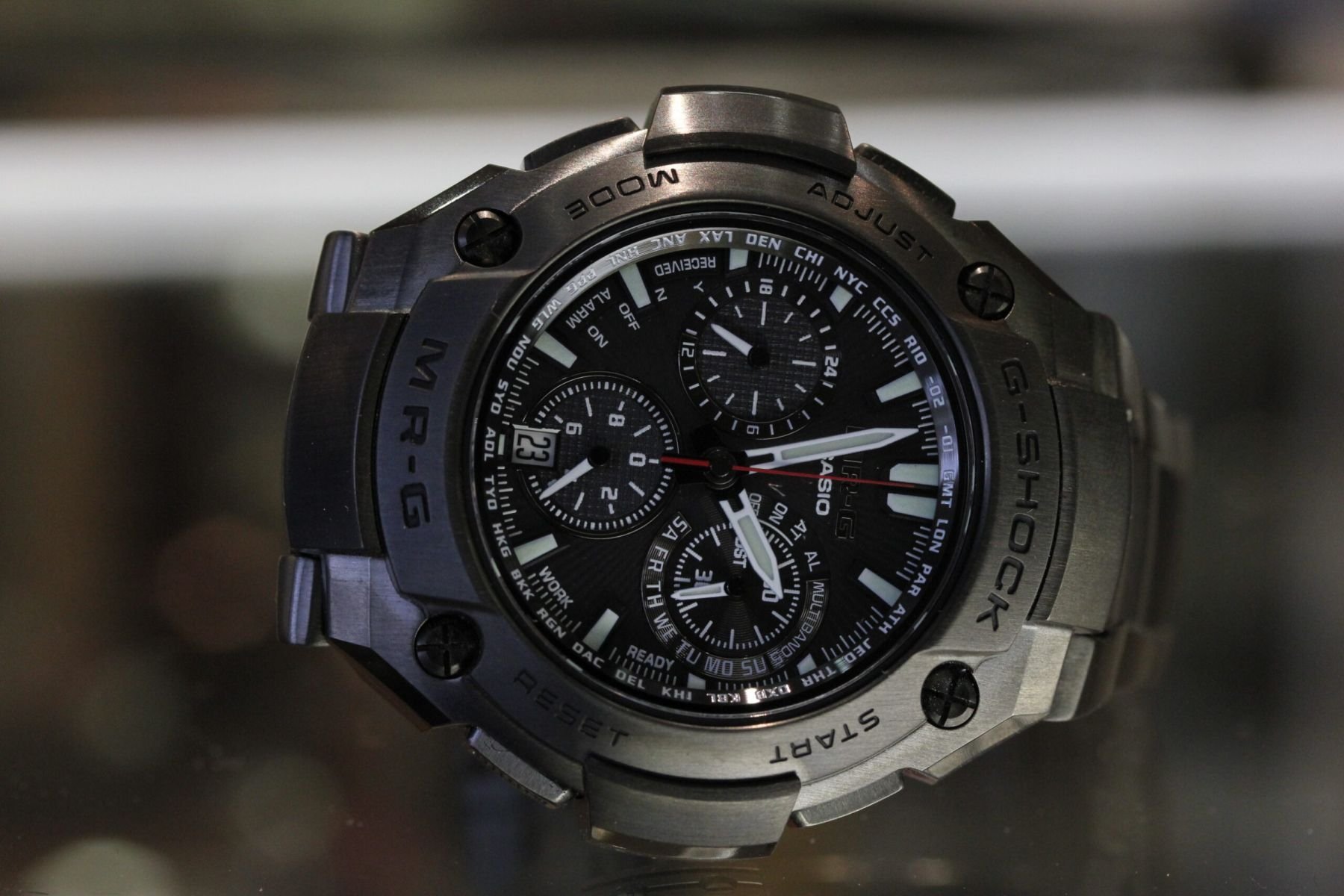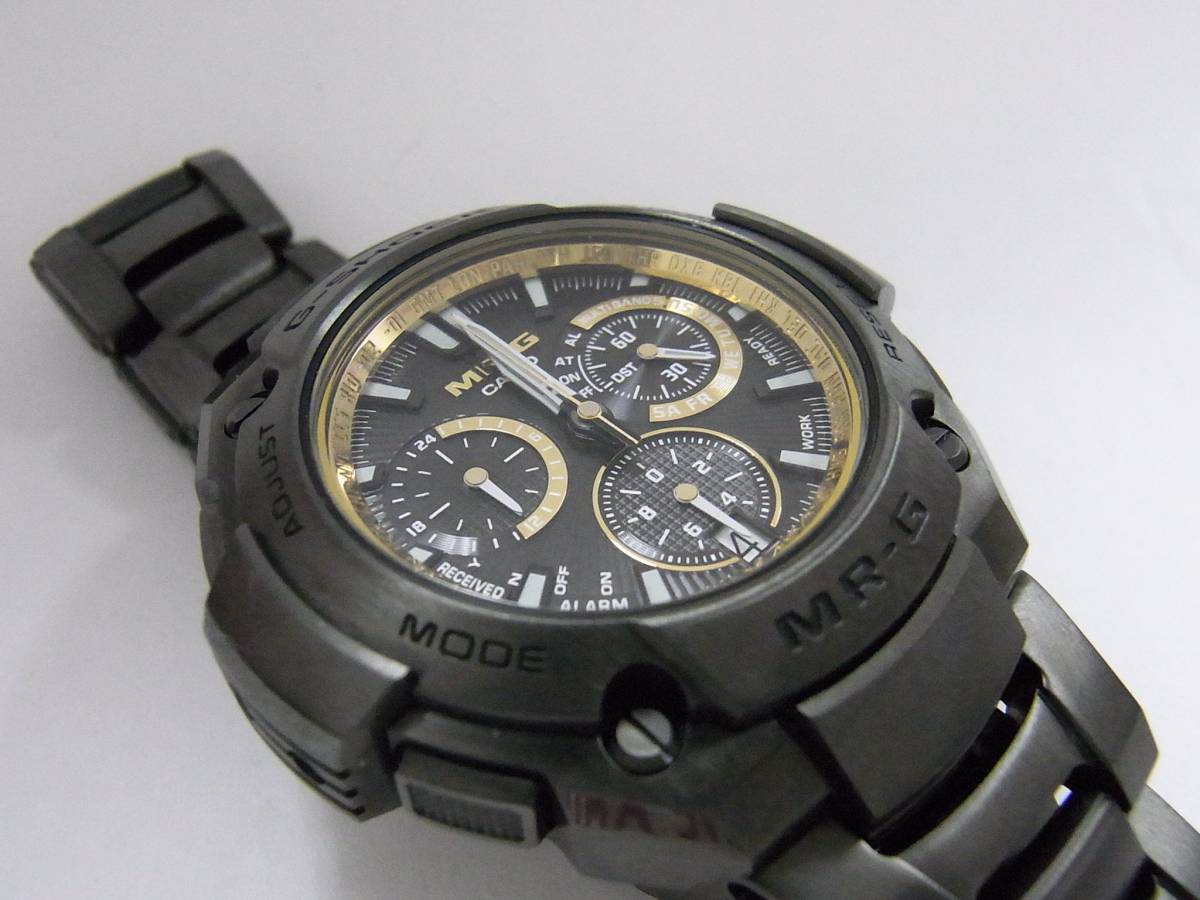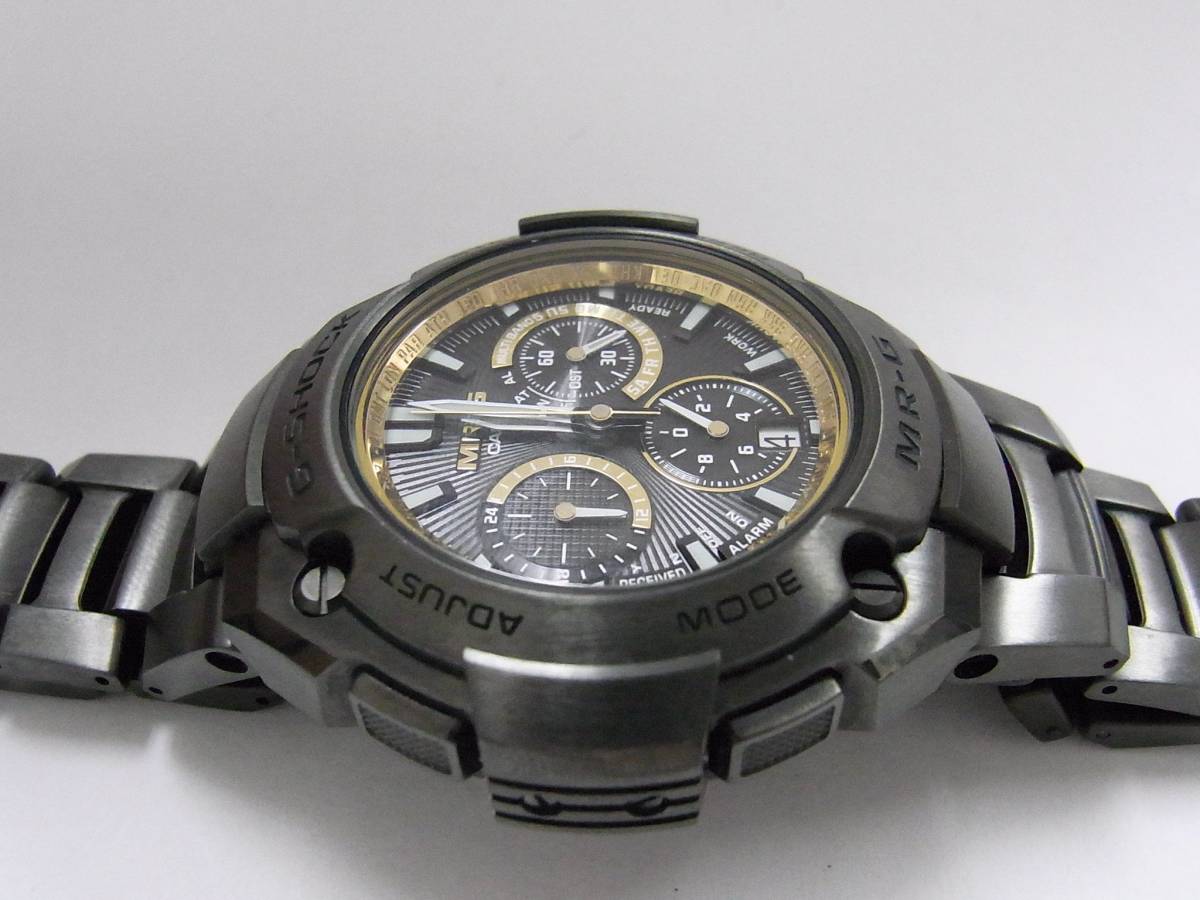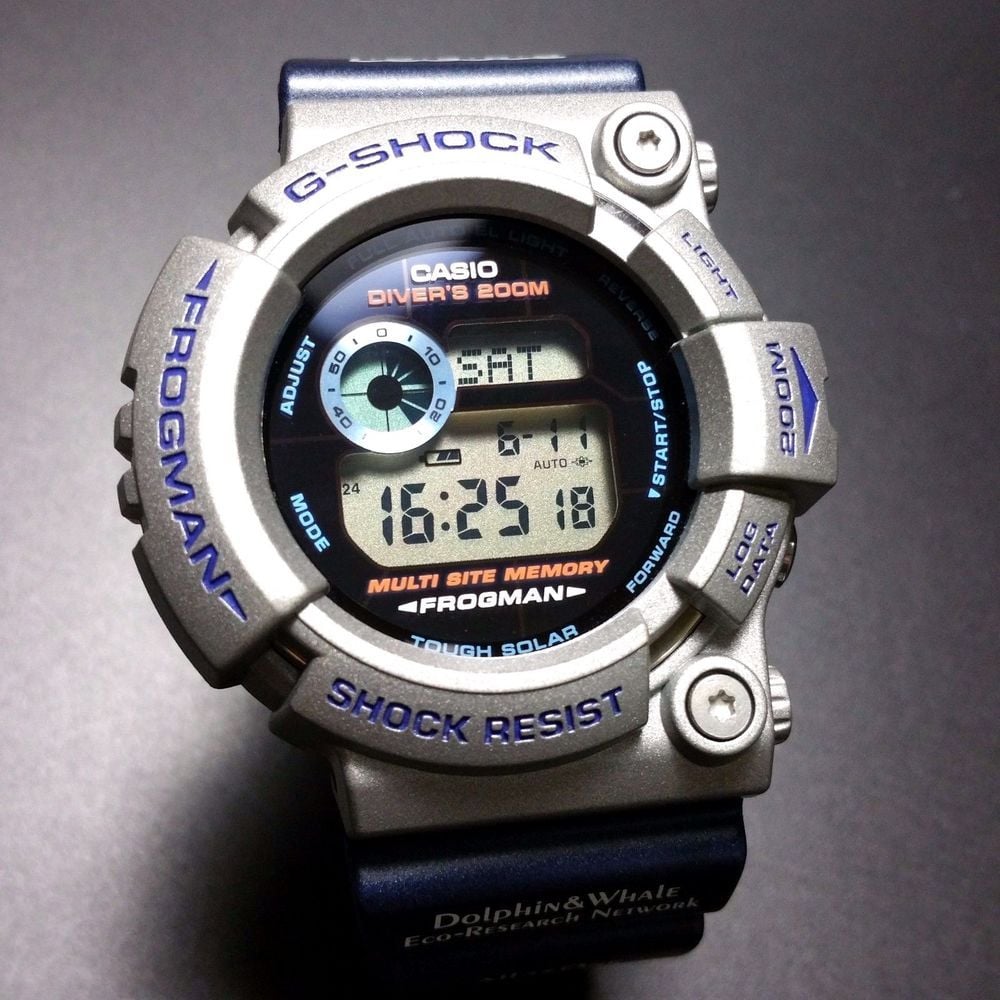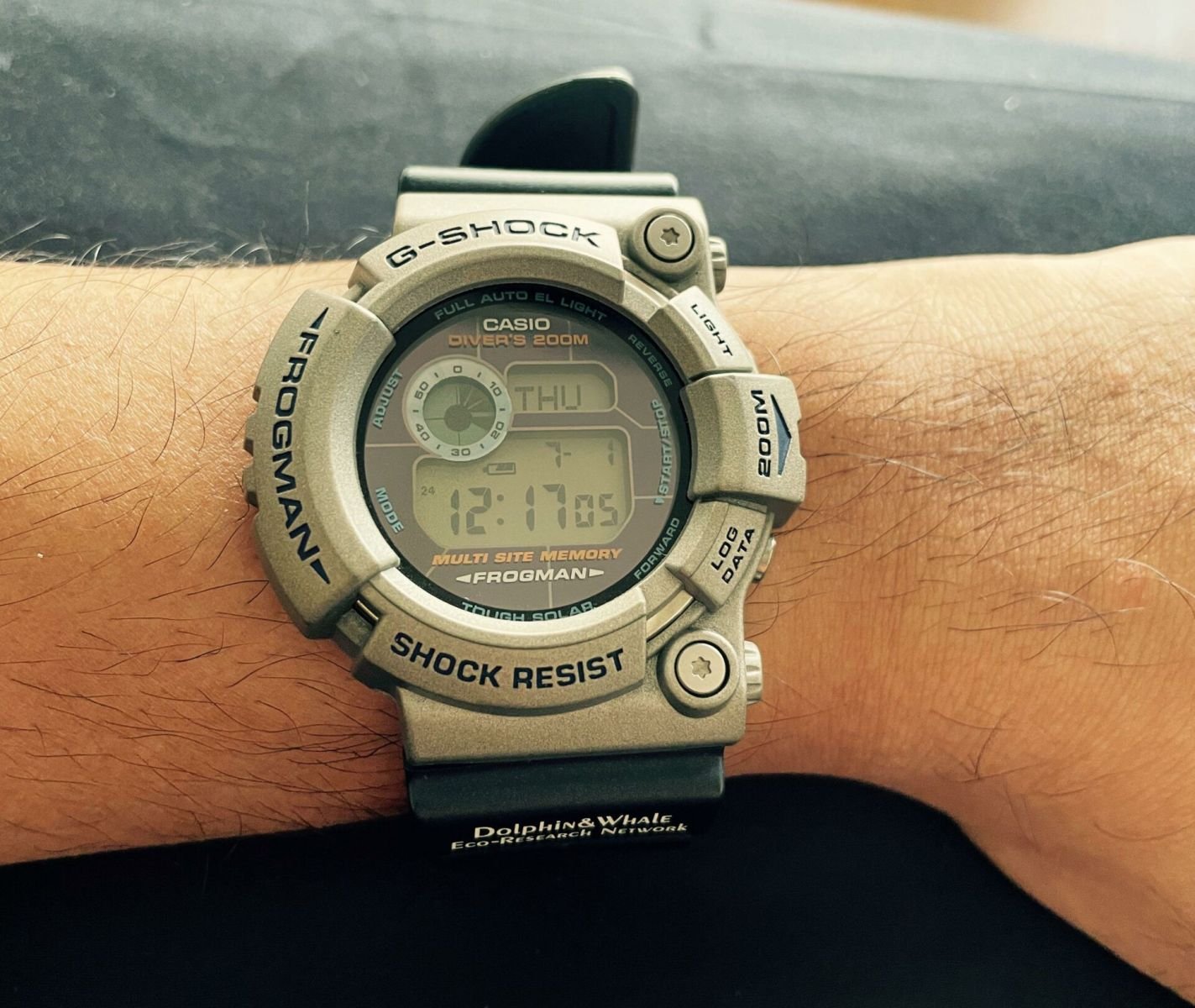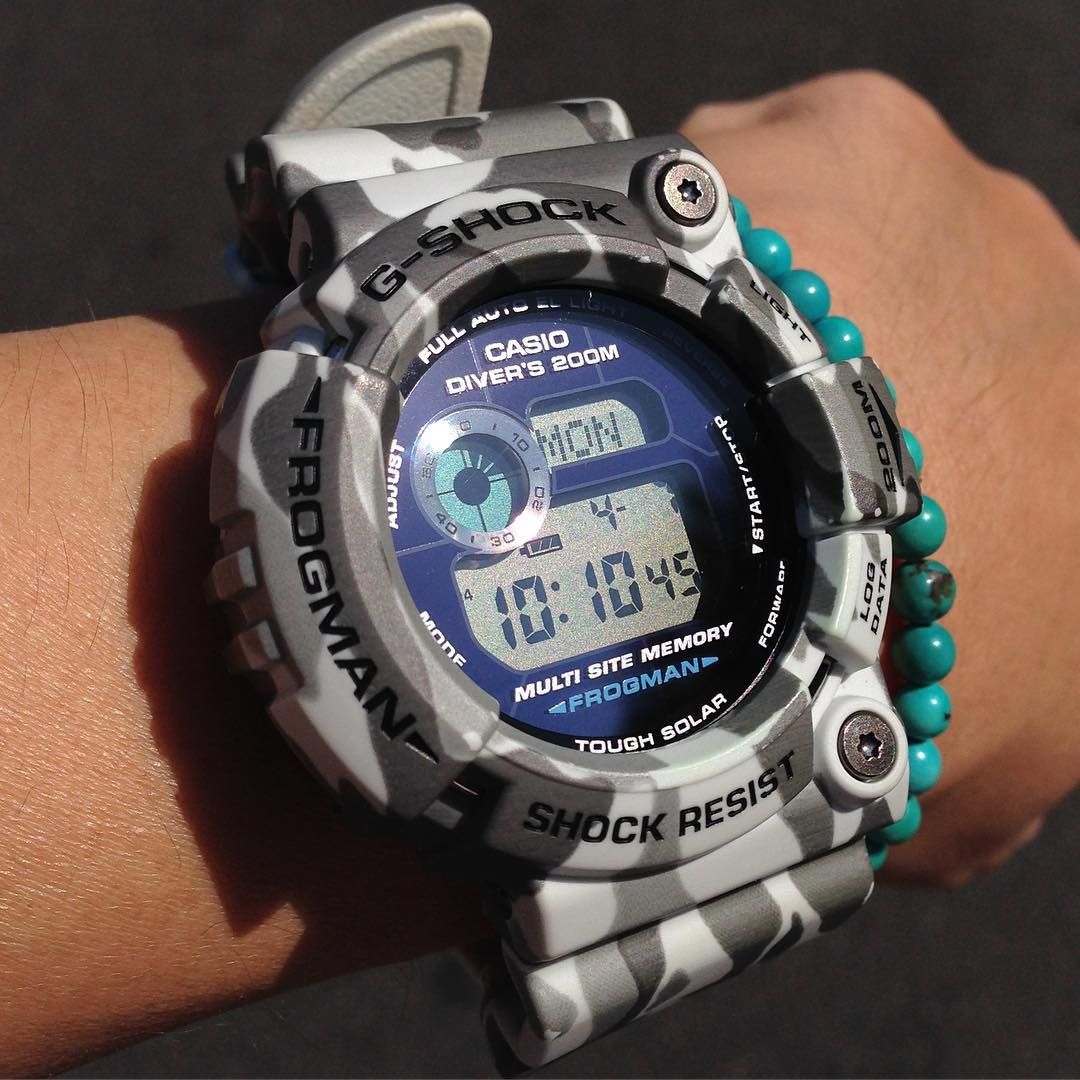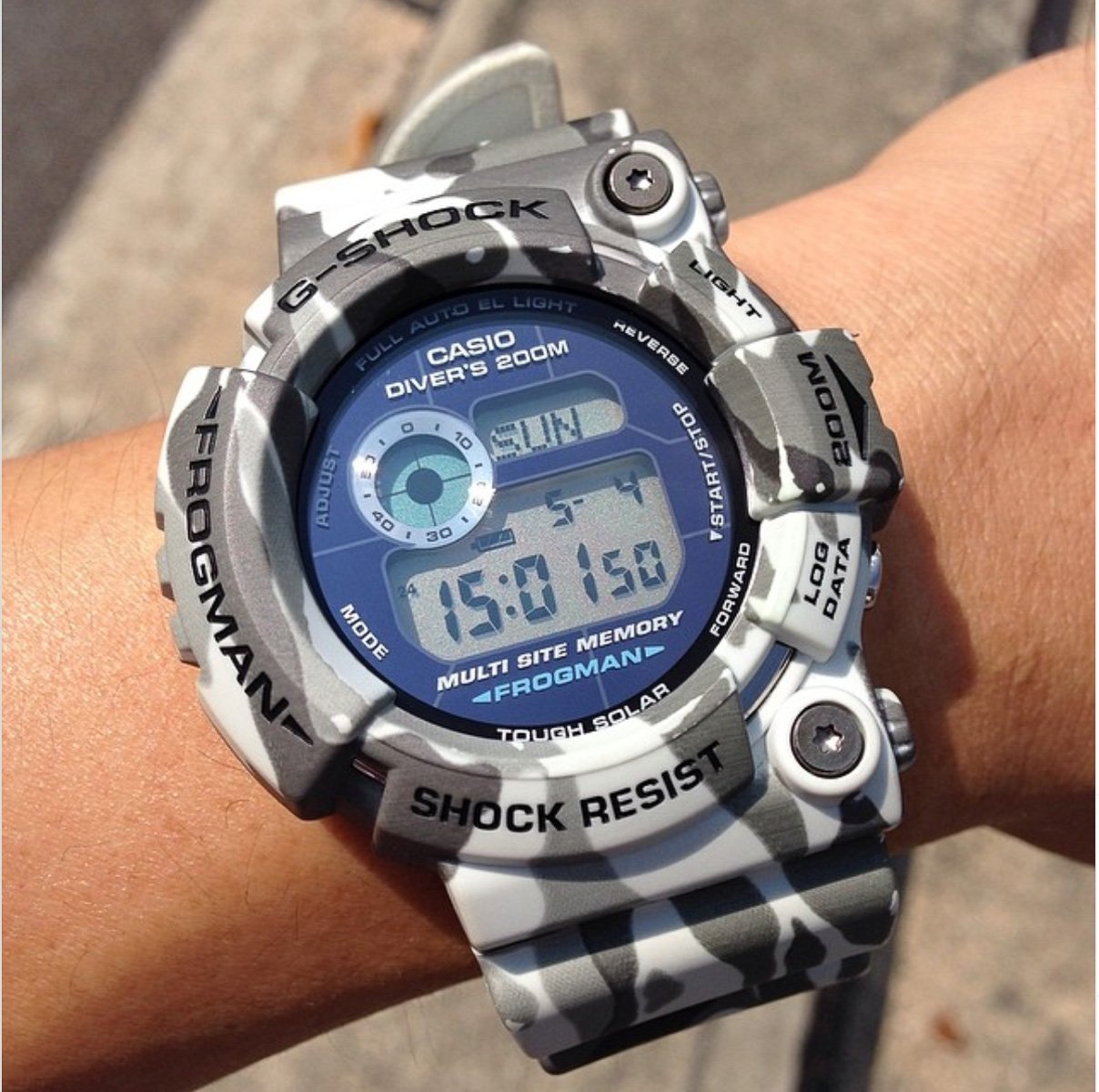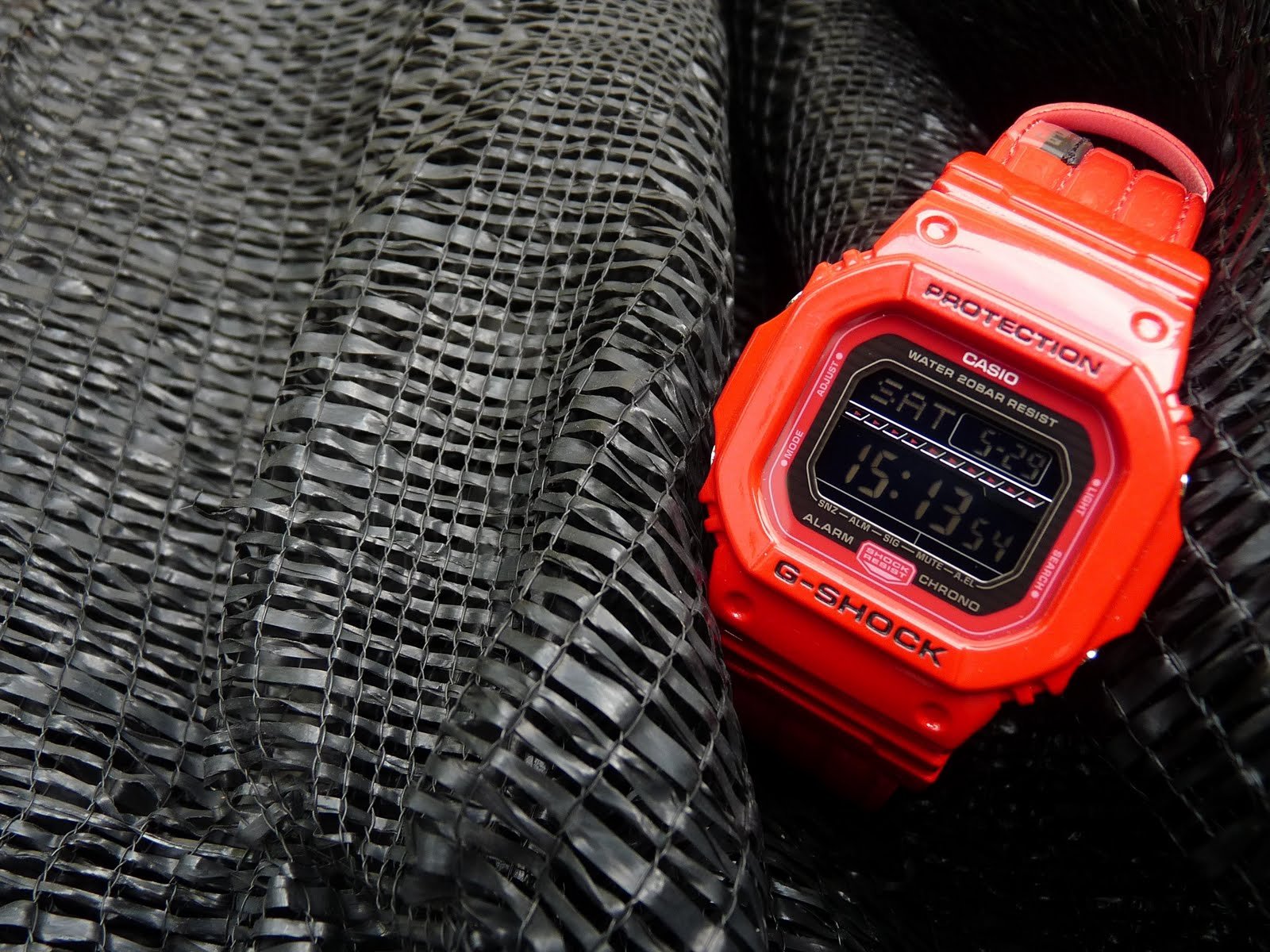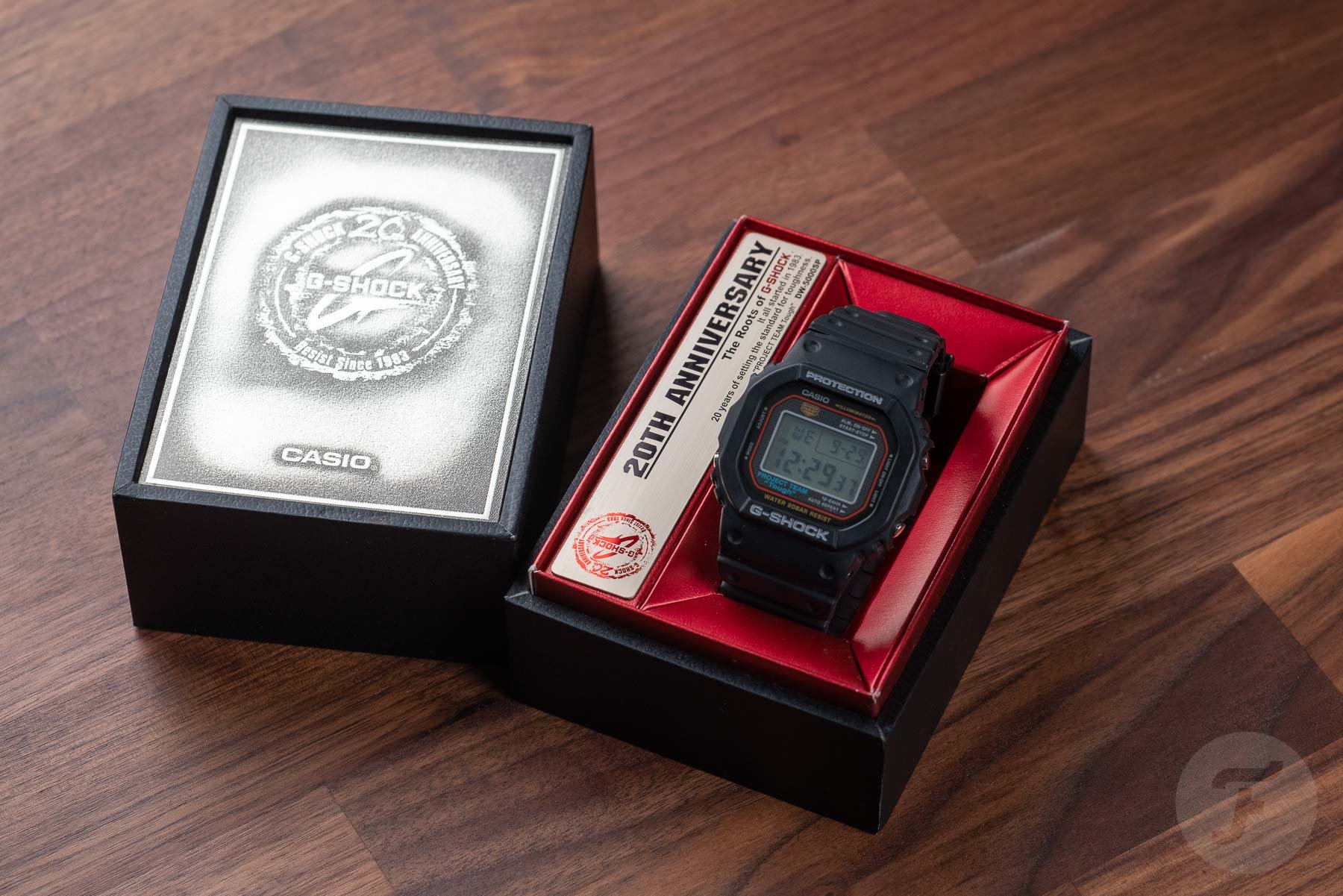Buying Guide: The Best G-Shock Watches From The 2000s
We like to talk about vintage watches a lot within the Fratello team. Though most of what we write about is largely focused on the most recent releases and developments, for many of us, a lot of the fun can be found in the sometimes weird and often wonderful world of vintage watches. It’s a world full of history, remarkable watches, incredible stories, and quirky details. It inspired us to come up with a series of articles focusing on the best watches per decade from a select group of brands. Some of them are priceless, some of them are still affordable. In this installment, we will take a look at the best G-Shock watches from the 2000s.
By the turn of the millennium, Switzerland had proudly reclaimed its title as the watchmaking capital of the world. The 2000s, in many ways, formed the blueprint for the watch industry as we know it today. By the time the 2000s came around, mechanical watches were incredibly popular. Instead of just selling instruments that told the time, the major brands became cornerstones in the world of luxury goods, and the watch industry was thriving.
We saw brands being bought by conglomerates that turned into the luxury powerhouses they are today. But the 2000s was also the decade that saw the rise of independent brands alongside the industry’s big players. Small brands made it their goal to push the envelope of watchmaking in terms of design and technological developments. In the early 2000s, we also saw watches increase in size like never before. Panerai, Audemars Piguet, Hublot, and IWC enjoyed a great rise in popularity with their oversized watches. They will all be part of the best watches of the 2000s.
G-Shock in the 2000s
While the Swiss watch industry was thriving, the Japanese brands were not standing still either. A couple of weeks ago, I discussed Seiko in the 2000s, and soon I will dive into the world of Grand Seiko in the 2000s. But the Japanese brand that probably had the biggest cultural impact in the ’90s and ’00s was Casio‘s sub-brand G-Shock. As I explained in the last Buying Guide article about G-Shock, the watches were a favorite amongst different subcultures.
You could see rappers, skateboarders, fashion designers, and artists all wearing G-Shocks. The brand understood perfectly that to be successful, it would have to claim that street culture in marketing as well. Not only did G-Shock use streetwear culture in its marketing, but the brand also set up collaborations with famous icons of street culture. It elevated the G-Shock from a watch brand to a cultural phenomenon.
In the 2000s, G-Shock continued on the path it was on. As I explained in the article about the best G-Shock watches from the 1990s, G-Shock changed its direction in that decade due to a dip in sales. A renewed focus on performance, durability, technological development, and analog models assured that the brand remained relevant to a wide audience. In the decade after, G-Shock continued that successful strategy of innovating and creating some of the most remarkable designs. Picking five out of the hundreds of G-Shock that came out is ridiculous, of course. But let’s take a look at five of the best of the 2000s.
The Entry Point — G-Shock GW-9200-1 Riseman
The first pick is the G-Shock GW-9200-1. This version of the G-Shock Riseman was first released in 2008. The Riseman name goes back to 1997 with the introduction of the DW-9100. That first Riseman introduced G-Shock watches featuring two sensors for pressure and temperature besides the standard set of functions. The DW-9100 had been discontinued for a while when Casio decided to introduce the new 9200 Riseman series. The first model of the 9200 series introduced in 2008 was the GW-9200-1 in black with red accents, also known as the atomic Riseman.
The GW-9200-1 atomic Riseman was the first radio-controlled model with Multi Band 6 technology. At the time of introduction, most models were multi-band, calibrating with atomic clocks in Mainflingen (Germany), Rugby (England), Fort Collins (Colorado, USA), Fukushima (Japan), and Fukuoka (also Japan). But the Riseman GW-9200-1 went a step further by also calibrating with the 77.5 kHz atomic signal in China, making it the first 6-band atomic watch. Furthermore, the watch was solar-powered and water-resistant to 200 meters. It featured the barometer, altimeter, and thermometer sensors which made the Riseman model unique. Additionally, it featured the more standard set of G-shock features, like a 24-hour stopwatch, 33 world times, a countdown timer, five daily alarms, a time transfer function, and an E.L. backlight.
Same model, different modules
The module that was used for the GW-9200-1 atomic Riseman was module 3147. A later atomic Riseman model that I really like is the GW-9200ERJ-3, introduced in 2012. This model uses module 3145, which had the same functionalities. The difference is that module 3147 offers the option of using either the metric or imperial system of measurement in the Altimeter and Temperature/Barometer mode. Module 3145 is the module used for the Japanese versions of the Riseman that only use the metric system. It also features a different case back. The watch was part of the G-Shock Men In Military series that featured the Frogman, Mudman, Gulfman, and Riseman models executed in understated, earthy colors that look very good. Prices for both atomic models are around €500. I would try and get my hands on the Men In Military GW-9200ERJ-3.
My choice — G-Shock x Parra DW-5600PR-4
As this is the last decade that I will discuss in the series, I will pick a G-Shock that came out in 2011. I know it’s cheating a bit, but this one is special to me, so I would love to feature it. Some of you might know that I used to be quite the sneakerhead until a good ten years ago or so. I still love checking out sneakers to find out if there is something that I would like to buy, and I do still buy sneakers regularly. But the will to keep track of all the releases religiously has faded. Sometimes the old flame gets lit, though, and then I feel the passion I once had for the world of sneakers. Such is the effect of seeing this G-Shock collaboration with Amsterdam-based artist Piet Parra.
Parra is a legend in the world of hip-hop, sneakers, and street art. I love his stuff and have some of his works in my apartment. One of the most special ones is a concert poster that Parra created for a concert I went to at the iconic Paradiso venue in Amsterdam in 2017. A small number of these posters were handed out through a raffle, and I was one of the lucky winners. The poster perfectly connected the world of art and sneakers to my love for music, and it’s why this poster means so much to me. Searching through the extensive G-Shock archives, I came across the G-Shock × Parra DW-5600PR-4. It was another reminder of my love for Parra’s work.
Iconic color combination
The watch is very simple as it uses different colors for the different parts of the watch. But it’s this combination of colors that makes it immediately recognizable as a Parra. The use of light blue, pink, and red is especially typical for a lot of his work. And by work, I do not just mean art. It’s a color combination that you can also find used for one of the most iconic Nike Air Max 1 models ever created and a grail pair for many Air Max collectors. As you can see, the Nike Air Max 1 Amsterdam is also a perfect example of the same colors that lead to something spectacular. It has made the collaboration between Nike and Parra a legendary sneaker.
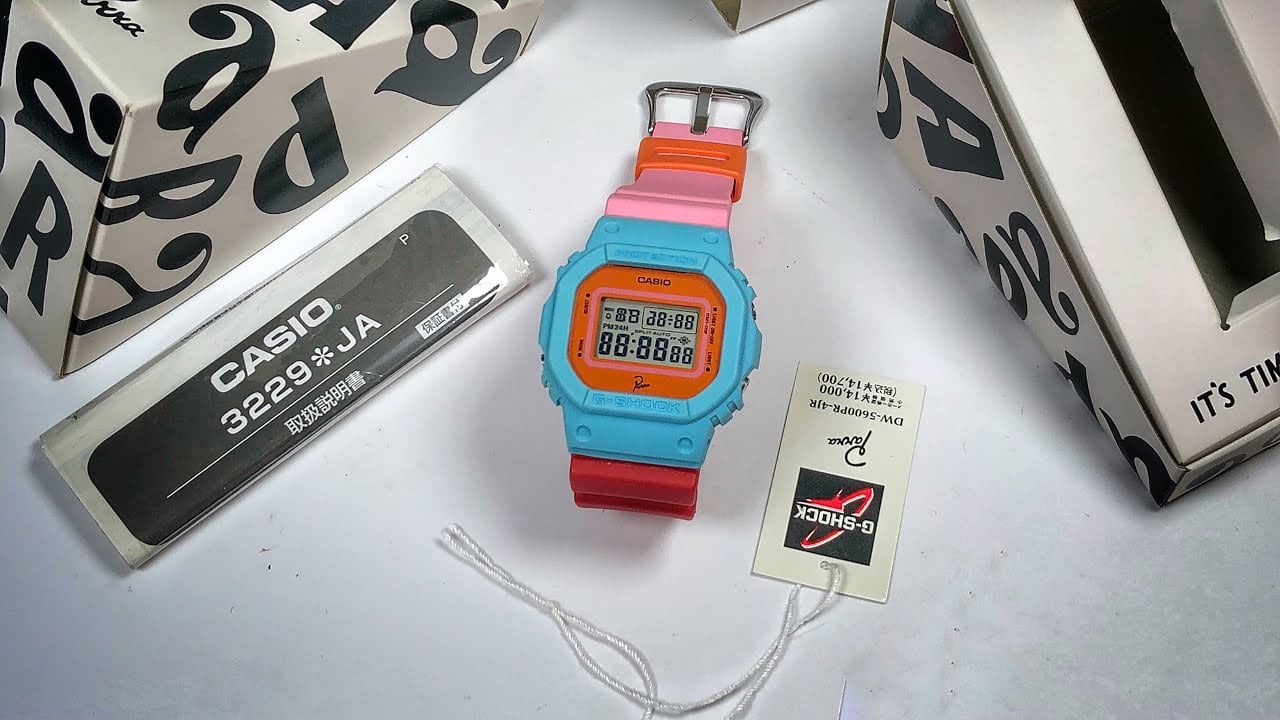
Image courtesy of gshock highfashion
This G-Shock was released in 2011 and has become another great collaboration piece that shows that Parra’s choice of colors works perfectly for a G-Shock watch as well. When the watch came out, it did not sell out immediately because many people thought the colors were too feminine. I love the watch because the colors do all the talking. Above the display, you will find the Casio logo, and underneath you see the Parra logo. Both are printed in black on an orange background. I could go on for a while about this watch and Parra, but I realized that I had forgotten about this watch and I need one. So I’ll focus on that. Prices for one are roughly between €175 and €250, which is a steal, at least in my book.
Money is no object #1 — G-Shock DW-5000SP-1 20th Anniversary
The 2000s also saw commemorative models celebrating the 20th and the 25th anniversary of the first G-Shock. For the 20th anniversary, G-Shock created the DW-5000SP-1, which was released in May 2003. The watch is a remake of the first G-Shock DW-5000C. Robert-Jan owns one of these models, and it is a joy to see and wear. It is not an exact copy, however. The 20th-anniversary version has “Project Team Tough” mentioned underneath the display. On top of that, the watch has a special 20th-anniversary case back.
Technically, the 20th-anniversary version also featured a different module. The original DW-5000C featured the 240 module and the 20th anniversary featured the 1545 module. The visual difference between the two is the placement of the day indicator at the top of the display. On the original model, it is placed further to the left. With the re-issues, the day indication is placed closer to the center. Casio produced a limited number of the DW-5000SP-1, although it seems to be a mystery how many were produced.
The original or the re-issue?
What you will see quite frequently is the question of what the best “original” DW-5000 model is to buy. It’s an understandable conundrum because the original DW-5000 models from the 1980s suffer from age and older production techniques. But it’s a very personal question with a very personal answer. If you are looking for the iconic original that started it all, there is no other way but to chase the 1983 original. But that comes with its share of technical and material risks. The reissue could be your best option if you want a brilliant modern rendition of the first model. The 20th-anniversary model of the original DW-5000 does show up for sale occasionally, priced between €500 to roughly €800.
Money is no object #2 — G-Shock MRG-8000
The next pick is the G-Shock MRG-8000, which was first introduced in 2007. Casio only produced two different models in the MRG-8000 series. The first is the MRG-8000B-1A that you see pictured. At the time of introduction, this was the top-of-the-line G-Shock. The watch was made for the Japanese market, and therefore, it is quite a rare bird. This model is special because it is the first G-Shock that had a case made of a combination of resin and titanium, and it came with a black DLC coating. As you can see, it also features a full titanium bracelet with a folding clasp. The construction of the case was designed to achieve a shock-resistant structure. The use of premium materials, in terms of G-Shocks, is also proven by the fact that the watch has a sapphire crystal.
The dial has a classical analog chronograph layout with a date at 6 o’clock. Furthermore, it features a string of different indicators in the form of multi-layered registers, a world time track on the outside of the dial, and several indicators around the 60-minute track. As you can see, Casio also ensured a certain level of sophistication by adding a nice structure to the registers, and the silver MR-G logo was applied on the dial. The watch featured a string of different functionalities and technologies like Multi-Band 5 technology for time accuracy and time correction, Tough Solar for charging, and a world timer with 29 time zones and 27 city codes. On top of that, it comes with your standard set of functionalities like alarms, countdown timers, a stopwatch, and an automatic calendar that is accurate until the year 2099. It’s a serious piece of kit.
The second model
Casio also produced a second model that was a special collaboration timepiece with Nissan’s in-house tuner Nismo. As part of G-Shock’s 25th anniversary, the brand released the special edition G-Shock × Nismo Fairlady Z in 2008. The name refers to Nissan’s factory Fairlady Z (350Z), a beast of a car powered by a 4.5L V8 engine that competed in the SUPER GT championship in Japan. Technically, the watch is the same as the first model that came out the year before. But Casio ensured that this special variation looked different from the first model. The combination of matte black and gold accents looks majestic and gives the watch a special look.
On top of that, the dial has a special pattern structure for an extra dynamic feel. Overall, this 46mm beast of a watch feels more special. As mentioned, Casio limited production of the MRG-8000 to two models in 2007 and 2008. As both models were Japanese domestic models, they are not easy to find. On top of that, they don’t come cheap. You can find them for prices starting at roughly €1.2K but expect them to go up quickly to €2.5K for one in great/new condition. What you get in return is a very serious watch, showing that G-Shock was not just a brand for fun, affordable watches. The use of premium materials, the level of detail, and the functionalities showed that Casio could produce serious watches under the G-Shock brand. And that hasn’t changed one bit with the current MR-G series.
Money is no object #3 — G-Shock GW-200
The last pick on this list is another series of watches. The G-Shock GW-200 series was introduced in 2001 with the introduction of the G-Shock GW-200-2. It was the fourth generation of Frogman models and the first series of solar-powered G-Shock models. The GW-200 stayed in production until 2009 when it was replaced with the GWF-1000 Frogman. The GW-200 lineup featured several remarkable models, from which I have picked two more extravagant pieces. G-Shock first introduced a blue model in the GW-200-2. But that same year, the brand also introduced the special edition GW-200K-2. It is one of the many special editions G-Shock has developed since 1994 in collaboration with the volunteer group ICERC Japan.
The ICERC models are produced to focus on environmental awareness and education activities. These limited editions, also known as the Love The Sea And The Earth models, come in various executions. But a recurring color combination is blue and white. In the case of the GW-200K-2, it’s a gray titanium case with a blue rubber strap. You will find text referring to the good cause on the blue strap. It’s a color combination that is very attractive. Inside the watch, Casio used the Tough Solar 2422 module for the entire series of GW-200 models.
The Brazilian Frogman
Another model that was part of the series that stands out is the GW-200CF-7, also known as “The Brazilian Frogman”. This model was released in March 2004 and featured a brilliant gray camo pattern that makes it a great-looking piece. It was limited to 400 pieces only and therefore is quite tough to find, especially in good condition. As most of you will probably know, the Frogman models are G-Shock’s range of diving watches that are ISO 6425-certified. This certification standard is only used for serious diving watches that have undergone a series of specific tests before getting the certification.
The GW-200 Frogman models are water-resistant to 200 meters and have a dive time and surface interval measurement function. Additionally, the watch is equipped with an ID. function that allows you to store your credit card number, passport number, and blood type in case something happens. On top of that, they are anti-magnetic and low-temperature resistant and feature the standard set of G-Shock functions that we know. As you can see, this is a very serious piece of kit, and perfect proof that G-Shock watches are a great combination of style and functionality. Finding a GW-200K-2 ICERC is possible, and you can expect to pay between €400 and €800 for one. The GW-200CF-7 “Brazilian” is even rarer and goes for around €1,000. Both are great examples of what makes G-Shock so special.
Final Thoughts
When it comes to this series of articles, I cannot stress enough to do your research. On top of being crucial in avoiding disappointment when buying a vintage watch, it can also be a lot of fun. Gerard is our Fratello in-house G-Shock expert, and he wrote great in-depth articles about several G-Shock-related topics that I suggest you read. On top of that, there is an entire universe of G-Shock fans and collectors that are very active online. I suggest you go and read more about G-Shock on Shockbase, G-Central, the Casio G-Shock Watchuseek forum. There you will find fans and collectors and a ton of info on the brand as well as the individual models.
This article only highlights a small selection of the most interesting models from the 2000s. There are certainly more models that deserve attention, but there is no time to get into all of them. Additionally, there is also no room to get into the details of the different colors and versions. As I mentioned, there is a whole library’s worth of information on all the different models. If you are in the market for vintage G-Shocks, it will be good to get into the intricacies, as they will help you greatly when it comes to spotting fakes or watches with replacement parts — something that is not uncommon or as frowned upon as with mechanical watches. The world of G-Shock is fascinating and great to explore.
Next, we will take a look at some of the best Grand Seiko watches from the 2000s. So keep an eye out for that article dropping next week. In the meantime, let us know what your favorite G-Shock from the ’00s is in the comment section!

